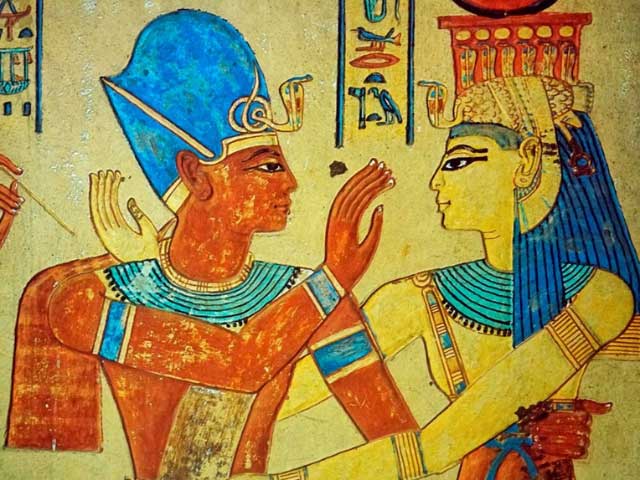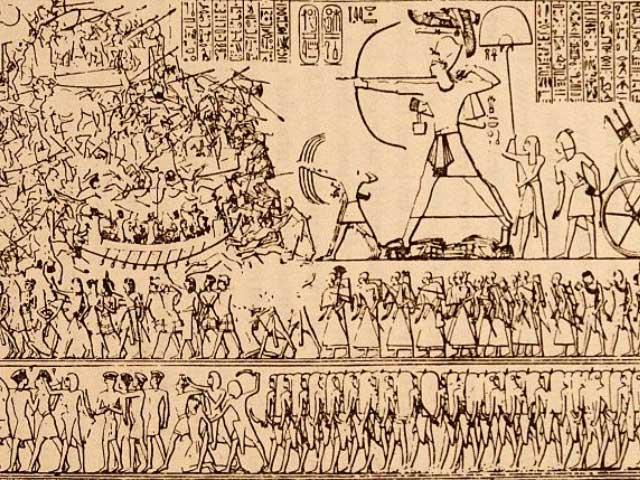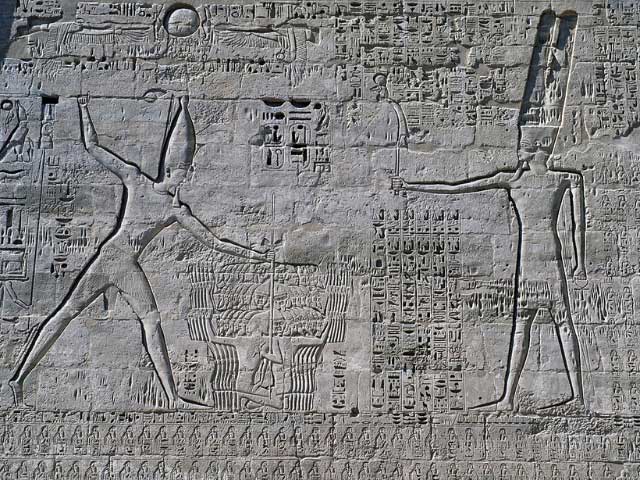Strikes are a common tactic used by workers to demand fair treatment. When workers stop working, production activities come to a halt, putting pressure on property owners to improve working conditions or raise wages.
Throughout human history, strikes can be traced back to ancient Egypt in the 12th century BCE, during the reign of Pharaoh Ramses III (circa 1170 BCE). According to Global Nonviolent Action Base, a damaged papyrus scroll was found that recorded multiple strikes by workers building the tomb of Ramses III due to food shortages.
Food shortages could stem from corruption within the ruling class or from certain rulers abusing their power and hoarding food from workers. This behavior led to dissatisfaction and protests among the workforce.

Ramses III was a wise and beloved pharaoh in Egyptian history. He followed in the footsteps of Ramses II and is considered the last great pharaoh of the New Kingdom of Egypt.
Ramses III was the second pharaoh of the 20th Dynasty of ancient Egypt. He reigned from 1186 BCE to 1155 BCE, ruling Egypt for a total of 31 years. During his reign, Ramses III led Egypt multiple times against foreign invasions and defended the kingdom from other warlords. To uplift the spirits of the Egyptian people, many temples and monuments were restored during his reign.
Ramses III was assassinated in the Harem Conspiracy, a coup orchestrated by his second wife, Tiye, who hoped to place her son, Pentawer, on the throne. Although those involved succeeded in eliminating the reigning pharaoh, they could not complete the second part of their plan when Ramses IV, the son of Ramses III, took control of the kingdom.

During his reign, Egypt’s national power reached its peak. After Ramses III’s death, his heirs fought for the throne, leading to civil conflict and the decline of the dynasty.
During Ramses III’s era, Egypt faced numerous invasions from the Sea Peoples, causing significant disasters for the kingdom. In 1208 BCE, Pharaoh Meneptah first repelled an invasion from the Sea Peoples; however, the Sea Peoples continued to invade Egypt until 1178 BCE when Ramses III finally defeated them in a land and sea battle.
The invasion by the Sea Peoples severely impacted the political stability and economic development of Egypt. Although Ramses III ultimately repelled this final large-scale invasion, the Egyptian kingdom was increasingly in decline.
According to the World History Encyclopedia, Ramses III established fortifications on the borders and dispatched a naval fleet to respond to the invasions. To prevent enemy ships from entering the Nile River, one of his strategies was to hide archers along the coastline at the river’s mouth. Records indicate that Ramses III achieved significant victories in naval battles, though little documentation exists regarding land battles. It is possible that Egypt also suffered considerable losses on land, which were not officially recorded.

During the peaceful period of the New Kingdom, Ramses III was heavily involved in constructing many magnificent temples. To establish a trade network and expand his influence, he ordered his army to conquer neighboring countries. Although these campaigns were successful, they did not replenish the treasury as expected, leading to financial shortages.
In the war against sea invaders, in addition to enormous military costs, a significant amount of labor was lost. At that time, Egypt’s agriculture heavily depended on weather conditions; due to unfavorable conditions and poor harvests, alongside bureaucracy and corruption, a considerable amount of resources was embezzled.
In the later years of Ramses III, resource shortages became increasingly severe, leading workers to strike as a form of protest. Strikes continued in many areas, further weakening the Egyptian economy.

The Valley of the Kings was built in the 29th year of Ramses III’s reign, with workers primarily coming from the city of Deir el-Medina on both sides of the Nile River. Initially, they had the highest income in the country, but wages were not paid on time during this period. The construction of the necropolis and the lives of laborers faced significant challenges.
Such protests had never occurred before, and Ramses III and his close associates did not know how to address the issue. After the workers’ protest, government officials finally paid wages on time, but disputes arose between the workers and the rulers. This event marked the first time the working class organized to fight for their rights instead of relying solely on the benevolence of their rulers.




















































